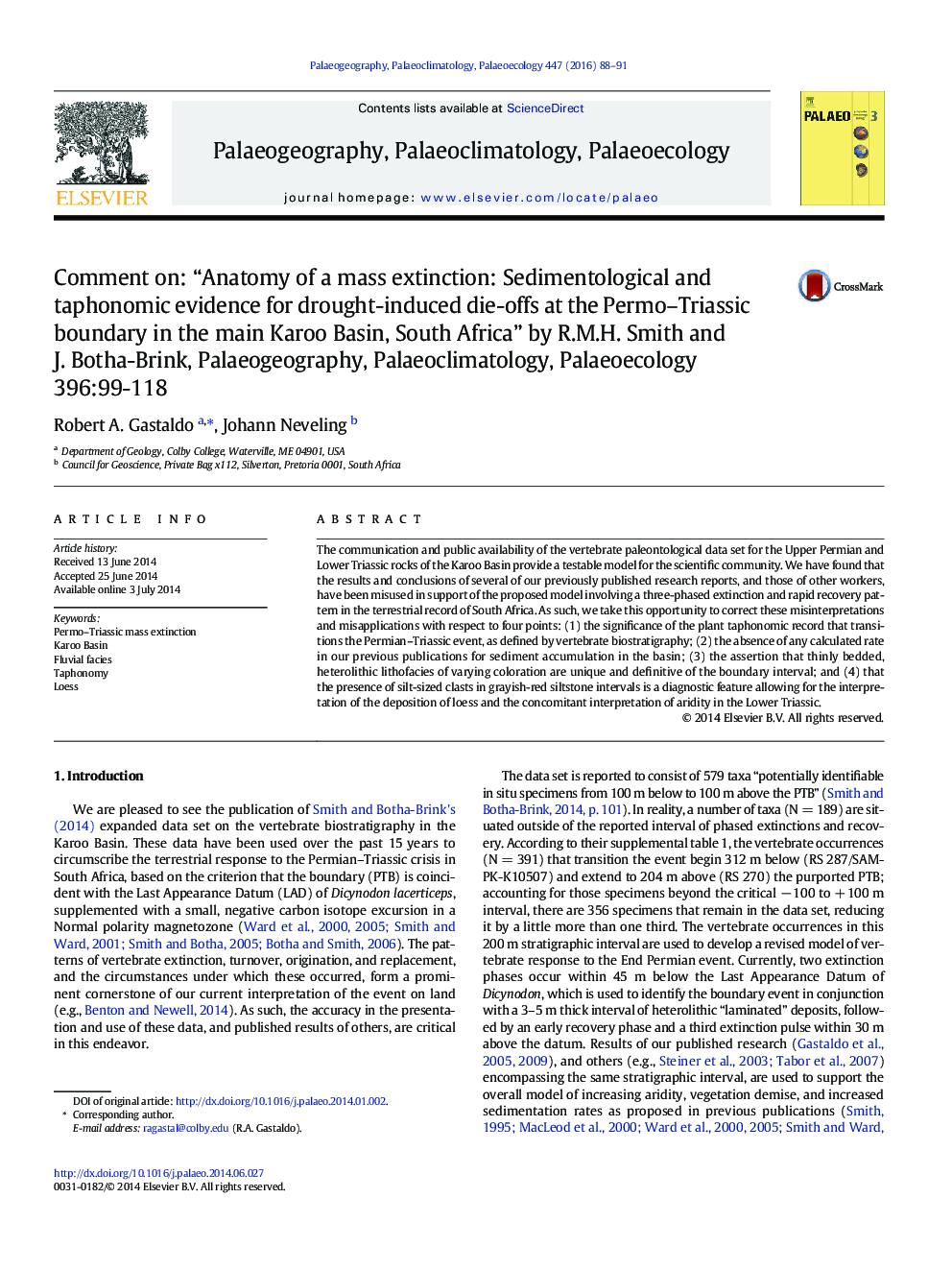| Article ID | Journal | Published Year | Pages | File Type |
|---|---|---|---|---|
| 4465798 | Palaeogeography, Palaeoclimatology, Palaeoecology | 2016 | 4 Pages |
The communication and public availability of the vertebrate paleontological data set for the Upper Permian and Lower Triassic rocks of the Karoo Basin provide a testable model for the scientific community. We have found that the results and conclusions of several of our previously published research reports, and those of other workers, have been misused in support of the proposed model involving a three-phased extinction and rapid recovery pattern in the terrestrial record of South Africa. As such, we take this opportunity to correct these misinterpretations and misapplications with respect to four points: (1) the significance of the plant taphonomic record that transitions the Permian–Triassic event, as defined by vertebrate biostratigraphy; (2) the absence of any calculated rate in our previous publications for sediment accumulation in the basin; (3) the assertion that thinly bedded, heterolithic lithofacies of varying coloration are unique and definitive of the boundary interval; and (4) that the presence of silt-sized clasts in grayish-red siltstone intervals is a diagnostic feature allowing for the interpretation of the deposition of loess and the concomitant interpretation of aridity in the Lower Triassic.
